Patricia L Boyd
1:1
Works
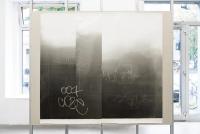
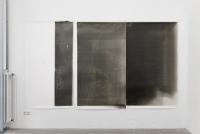

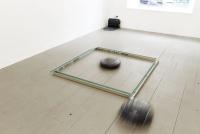
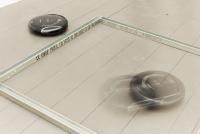
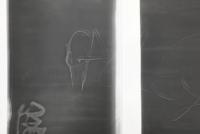
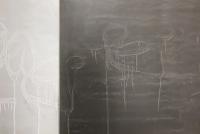
Installation Views
Press Release
In some forms of Surrealism, particularly those in oil, the picture plane acts as a kind of window: perhaps opening to scenes set out of doors, precisely onto the unconscious (clouds, clues). The canvas becomes an illusionistic site of projection; even abstracted. We scan its surface delicately for meaning, staring scrupulously after the artist’s most unstudied, errant mark. Seeking in all things a signature, a perfect betrayal, some sign –
The painting as a screen for the viewer’s selfish desires: now, photographed and glimmering through densely codified pixels, now touched by softly spreading fingers and so sprawled, excruciatingly, across the square face of your gently cradled radiant device. Or else the glazed surface, also concealing a micro two-way camcorder, smartly returns the leering looker’s spellbound gaze back to himself. No way, nor window out. We are captured by the glancing cinematic image, a shadowy exteriorized self, assaying only glass upon which we vaguely receive another – perceive an other – side. Beyond the pane: a distant pale. From the street: a dissimilar relation to the transparent, all-encompassing enclosures of private property, personal promotion, allover assemblages of sexy saleable goods. The modernist envelope – a storefront paean to engineered urbanity (Haussmann, the Manhattan grid) – presents itself as permeable, and still more plausibly, durable panel for the illicit action of “getting up.” Here, outside, the deviant mark performs a distinct bourgeois undesirability, inscribing a disobedient politics of display.
Lovers are like bees in that they live a honeyed life Abolish class society Sous les paves, la plage! Give peace a chance Die yuppie scum
Truths to spend the time (the $$) buffering, blatantly, out. For a good time, sell now. The street, they will say, is no place for writing. The street? Do not mistake it for a blank page. This shop bears no particular significance for your “poetry.” And still, among certain populations, an acid écriture prevails.
Patricia L Boyd’s recent large-scale prints invert relations between façade and facture. They are photograms: made carefully, camera-lessly, from the direct (transparent) object of the one-to-one framed windowpane. Erratic exposure to nocturnal (street) light, for variously intuited durations, eventually maps the distinct imprint of each discontented external scratching a dedicated building bears. The result: a sort of light-sensitive frottage. The work was made in San Francisco; the words, melting into murky shades of ink-stained gray, not always legible. But as fully interiorized reproductions of the city’s unruly, labored writers, these darkened plates plainly ask: are you in, or are you out?
–Kari Rittenbach






